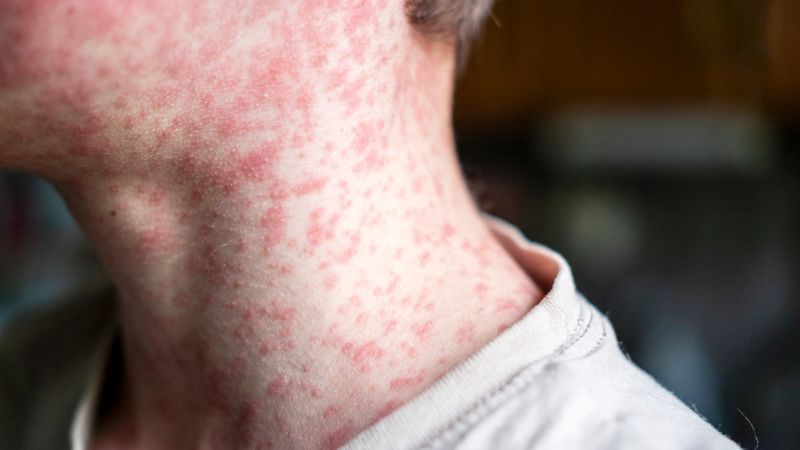Nearly every sample of commercial seafood found on the west coast contains microscopic, cancer-causing plastics, a new study warns.
Researchers in Oregon analyzed nearly 200 samples of shrimp, salmon, and other fish native to west coast waters to test for microplastics, tiny particle that get into our blood, accumulate in our organs and cause untold damage.
They leach into the food we eat, the water we drink and air we breathe and have been linked to heart disease, dementia and several forms of cancer.
In the new study, experts found 99 percent of fish samples that came from stores or fishing boats in Oregon contained traces of nearly 2,000 different microplastics.
Fibers from moisture-wicking clothes were the most common, followed by fragments from plastic packaging like water bottles and food containers.
Pink shrimp had the highest concentration of microplastics, while Chinook salmon had the lowest.
The team said smaller fish like pink shrimp may have had more microplastics because they may mistake them for zooplankton, which smaller fish are more likely to eat than larger fish.
While the study only looked at the west coast, the findings may have implications for the east coast as well, as several of the fish live on both sides of the country.
Amid the findings, however, the experts do not recommend shying away from seafood entirely, as microplastics can be found in virtually all food and water to varying degrees.
Researchers in Oregon found 99 percent of fish samples had traces of microplastic particles, which have been linked to heart disease and cancer

The above graph shows the concentration of microplastic particles in tested fish per gram of body tissue. The ‘R’ indicates fish bought from a store, while the ‘V’ represents fish from a ‘vessel’ or boat
Dr Susanne Brander, study author and associate professor at Oregon State University, said: ‘It’s very concerning that microfibers appear to move from the gut into other tissues such as muscle.
‘This has wide implications for other organisms, potentially including humans too.’
In the study, published in the journal Frontiers in Toxicology, researchers collected samples from six fish and shellfish species from Oregon stores and fishing boats: pink shrimp, black rockfish, lingcod, Pacific lamprey, Pacific herring, and Chinook salmon.
A total of 182 tissue samples were obtained and tested for microplastics using infrared light.
The researchers found 180 out of 182 samples contained a total of 1,806 different microplastics.
Of those, 1,466 (81 percent) were from fibers, which come from synthetic clothing like athletic wear, carpeting, and some forms of upholstery.
Fragments made up 332 microplastics found (18 percent). These include pieces of plastic debris from items like plastic bottles, shopping bags, food packaging, and tires.
The remainder were from microplastic films, which come from synthetic polymers, chemicals that give food packaging and cookware their durability.
The only two seafood samples not containing microplastics were one lingcod and one herring sourced from a fishing boat.
Pink shrimp from fishing boats had the highest concentration of microplastics at 10.7 particles per gram of body weight.
There is no determined safe level of microplastic consumption for humans.
Pink shrimp tend to feed just below the surface of the water and generally eat algae and zooplankton, tiny animals measuring less than a quarter of an inch.
The researchers said pink shrimp may have the highest concentrations of microplastic because they mistake plastic pollution for zooplankton.
Dr Elise Granek, study author and professor of environmental science at Portland State University, said: ‘We found that the smaller organisms that we sampled seem to be ingesting more anthropogenic, non-nutritious particles.
‘Shrimp and small fish, like herring, are eating smaller food items like zooplankton. Other studies have found high concentrations of plastics in the area in which zooplankton accumulate and these anthropogenic particles may resemble zooplankton and thus be taken up for animals that feed on zooplankton.’

Pink shrimp (pictured here) had the highest concentration of microplastics among the seafood tested. Researchers said this could be from the shrimp mistaking microplastics for their food
Chinook salmon from fishing boats had the lowest concentration of microplastics at 0.03 microplastics per gram of body weight.
Because chinook salmon are much larger than pink shrimp – measuring about three feet long – they need to eat larger fish, making them less likely to mistake microplastics for their food.
The researchers said more research is needed to understand how microplastics travel to muscle tissue in fish, which humans eat.
The team said while the findings are ‘concerning,’ they are not suggesting avoiding seafood completely, as they can be found virtually everywhere, from food to bottled water.
Dr Granek said: ‘If we are disposing of and utilizing products that release microplastics, those microplastics make their way into the environment, and are taken up by things we eat.
‘What we put out into the environment ends up back on our plates.’











